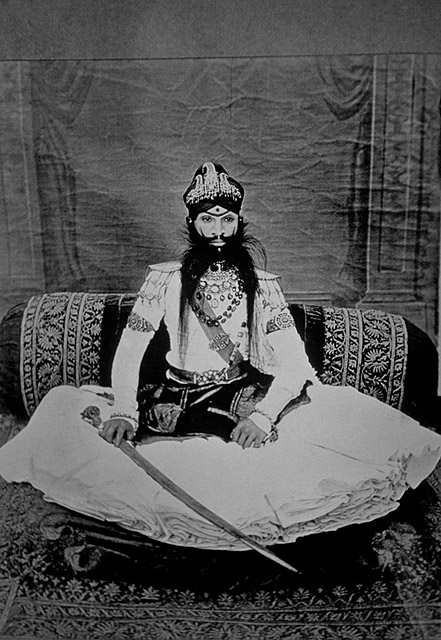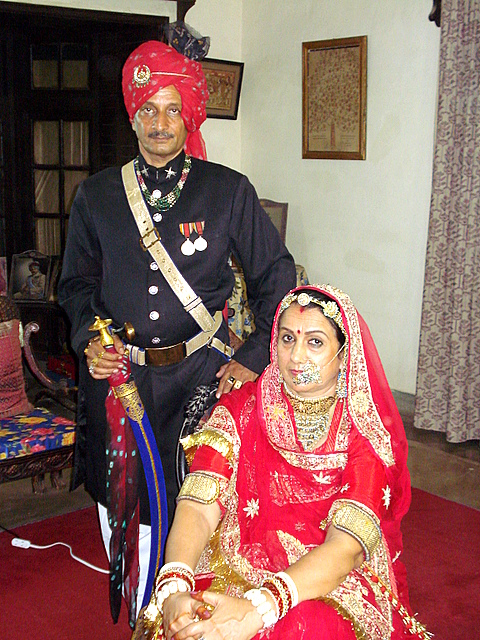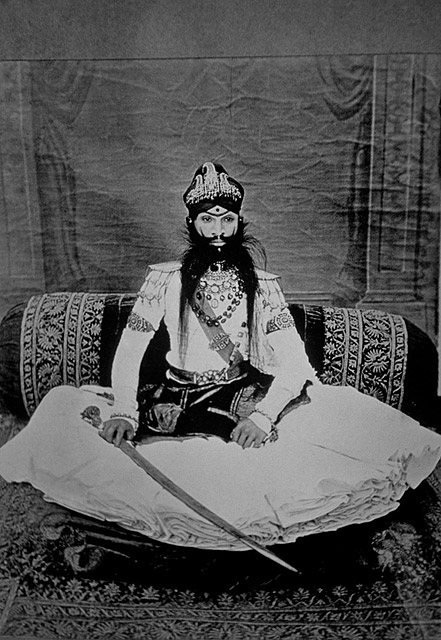
Maharao of Bundi

Maharaj Balbhadra Singh and Rani Rohini Kumari (Source: http://www.ishwariniwas.com)
Bundi, presently located in the state of Rajasthan, used to be an Indian princely state during British Raj. The ruler of Bundi is addressed as the Maharao which is derived from ‘Maharaja’. This region has one of the most illustrious histories that highlight the valor of the Rajput clan of the rulers of Bundi. The rulers of Bundi were Hada Rajputs, a clan of the Chauhans, who settled in that region in the 12th century. The picturesque town of Bundi is set in gorge with fortresses and palaces dotting the area that showcase the fine architecture of the Rajputs.
Origin and History
During the ancient times, Bundi was inhabited by the local tribes, particularly the parihar Meenas. It is said that the name ‘Bundi’ was actually derived from the previous Meena king named ‘Bunda Meena’. Over the course of time, the region of Bundi was overtaken by Rao Deva Hada in 1342 and thus began the rule of the Maharao of Bundi who dominated the region for many centuries. At one time, Bundi encompassed present-day areas of Kota, Jhalawar and Baran. The Maharaos of Bundi developed a close alliance through matrimony with the Sisodia clan of Mewar and also allied with them during times of war. History has it that the great Mughal Emperor Akbar tried to conquer Ranthambore, which was ruled by the Hada Rajputs of Bundi, but failed at doing so after trying thirteen times. This prompted the Mughal emperor to forge an alliance with Maharao Surjan who placed conditions that gave the Mughals limited access to their region in exchange for Ranthambore.
During the British regime, Rao Raja Bishan Singh developed a great relationship with Colonel Monson and even assisted him in conquering other neighboring kingdoms. His son, Maharao Raja Ram Singh was one of the most prominent kings of Bundi who established educations institutions and also introduced administrative and economic reforms. Throughout his rule, Bundi enjoyed the confidence of the British.
Present day Bundi has fine remnants of the fine architectural legacy left behind by the illustrious Maharaos of Bundi and has also become a popular tourist destination. Bundi has pure Rajput style of architecture without a touch of Mughal influence. The Maharaos of Bundi were great patrons of art and architecture and therefore the magnificent palaces have intricate frescoes that adorn the ceilings and walls of the palaces and showcase the valor and royalty of the kings of Bundi. From Baoris (stepwells) to forts, palaces and temples- there are many monuments that resonates the glory of its Rajput rulers.

Raja Rao Raghubir of Bundi (Source: www.indiapicture.in)
Style
There is a very famous painting of Raja Rao Raghubir of Bundi which exhibits the grand style of the rulers of that state. The Maharao has a very eye-catching coiffure beard. Wearing a bejeweled turban along with flowing silk robes and a cummerbund with the trademark sheathed sword, the Maharao spells royalty in every sense of the word. From beneath the king’s intricate beard, peeps out the illuminating diamond necklace which showcases the fondness that the Maharajas had for jewels.
The Maharao also had a great affinity for hunting, which can be easily visualized in the multiple games that they hunted and which are now on display at the museums in Bundi.
Influences over the years:
The style of the Maharao, much like the other royalty from the Indian princely states, became heavily influenced by the British mannerisms, fashion and style. During the 1800s the Maharao started dressing in Indowestern clothes or rather more informally. From food and cars to foreign artefacts and clothing, there were a lot of changes that the Maharao of Bundi adopted over the course of time which till date serve as an inspiration for many people living in India and across the world.
References:
Categories: Fashion Cults, Royalty
